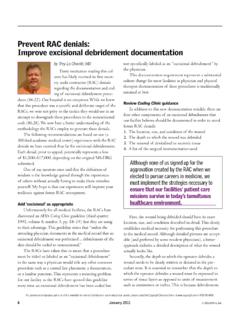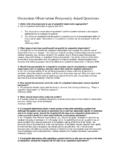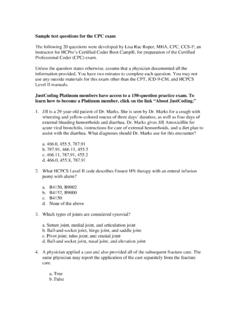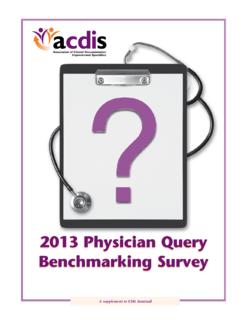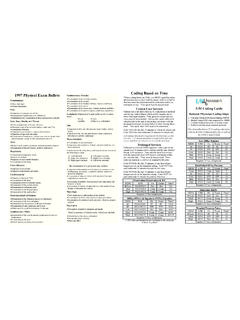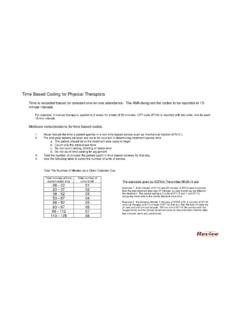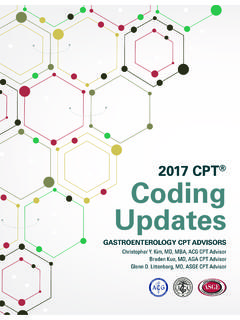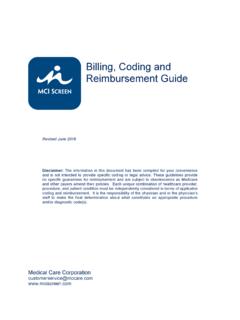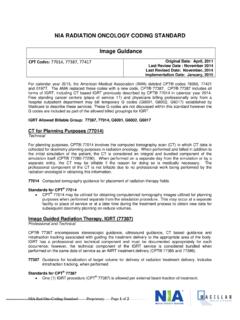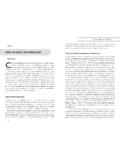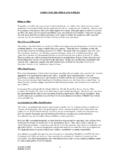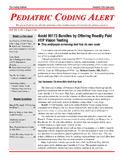Transcription of Sepsis and Septicemia: Clear Up Coding and …
1 Sepsis and Septicemia: Clear Up Coding and Documentation Confusion White paper Sepsis . Severe Sepsis . SIRS. Septicemia. Unfortunately, this isn't a case of tomato, tomahto. Coders and physicians need to know how to use these terms accurately, or inaccurate billing and Coding is a real possibility. And your facility needs every penny of the reimbursement it deserves. A strong clinical knowledge of these terms is a good place to start. Septicemia generally refers to a systemic disease associated with the pres- ence of pathological organisms or toxins in the blood, which can include bacteria, viruses, fungi, or other organisms, according to the ICD-9 Manual. By Jennifer Avery, CCS, Systemic Inflammatory Response Syndrome (SIRS) is the systemic response CPC, CPC-H CPC-I, senior to infection, trauma, burns, or other insult such as cancer with symptoms, regulatory specialist for including fever, tachycardia, tachypnea, and leukocytosis.
2 HCPro, Inc. Sepsis refers to the systemic inflammatory response to the infection and is manifested by three or more of the following SIRS conditions in a patient: Body temperature > C (101 F) or < 36 C ( F). Pulse > 90/min. Respirations > 20/min White blood cell (WBC) count > 12,000 or < 4,000. Altered mental status Significant edema or positive fluid balance Hyperglycemia (without diabetes). Severe Sepsis refers to Sepsis associated with organ dysfunction or failure, hypoperfusion ( , decreased blood flow through an organ), or hypotension ( , abnormally low blood pressure). There are also two specific types of Sepsis of which coders should be aware: Urosepsis refers to a localized infection in the urinary tract ( , urinary tract infection). FEATURES. Line Sepsis refers to an infection of the vascular catheter Causes and treatments 1.
3 Causes and treatments Coding and billing 3 Sepsis can have many causes but is often due to an infection when an Documentation and unusually large number of microorganisms are present in a body cavity or in querying 5 a patient's bloodstream for which there is no pathological response. In many cases, the microorganisms are found in a body cavity that is normally sterile. S e p s i s a n d S e p ticemia: Clear up Coding and Documentation Confusion OCTOBER 2009. 2 P r es e n t on A dmi ssion: Accurate reporting to en sure appropriate reim bursement October 2009. For example, bacteremia, which refers to the laboratory finding of bacteria in the bloodstream through a positive blood culture only, can progress to septicemia. But note that bacteremia denotes a laboratory finding, whereas septicemia denotes acute illness.
4 Bacteremia progresses to septicemia only when there is a more severe infectious process or an impaired immune sys- tem. Coders should be aware of the difference between these two conditions and consult the physician when the diagnosis is not clearly differentiated, according to the Coding Clinic, Volume 17, Number 2, second quarter 2000. Negative or inconclusive blood cultures do not preclude a diagnosis of sep- ticemia or Sepsis in patients with clinical evidence of the condition. Prior use of antibiotics by the patient or technical issues surrounding blood sampling can sometimes lead to a negative or inconclusive result. In fact, only 28% of patients with Sepsis have positive blood cultures, according to a recent study of eight academic medical centers. Other causes of local inflammation, characterized by redness and inflamma- Negative or inconclusive tion, include: blood cultures do not Surgical wounds preclude a diagnosis Endocarditis of septicemia or Sepsis in patients with clinical Cellulitis evidence of the condition.
5 Burns Trauma Coders and physicians commonly overlook these causes of septicemia. In these cases, toxins can be released from the localized inflammation into tis- sues leading to septicemia. Sepsis can lead to septic shock or organ dysfunction or failure without treatment. Septic shock is a sudden disturbance of mental or physical equilibrium and is a condition of hemodynamic and metabolic disturbance marked by the circulatory system's failure to maintain adequate blood flow to vital organs. Inadequate blood volume ( , hypovolemic shock) may cause septic shock, as can inadequate cardiac function ( , cardiogenic shock) or inadequate vasomotor function ( , neurogenic shock). Signs of organ dysfunction or failure include the following: CV-shock: Systolic blood pressure < 90 or mean arterial pressure < 70 for at least one hour despite adequate fluid resuscitation.
6 Vasopressor use may mask hypotension. Lactic (metabolic) acidosis: pH < and plasma lactate > times normal. Renal: Urine output < cc/kg/hr for one hour despite fluid resuscitation or Serum Cr > mg/dl. Respiratory: PaO2/FiO2 ratio < 300 (nl wedge); hypoxemia 2009 by HCPro, Inc. Any reproduction is strictly prohibited. For more information, call 877/233-8734 or visit October 2009 P re s ent on Admi ssion: Accurate reporting to ensure appropriate reim bursement 3. Hematology: Plt. Ct. < 80,000 or 50% decrease over the past three days (thrombocytopenia); leukemoid or neutropenic reaction;. protein C, D-dimer (hypercoaguable state), activated partial throm- boplastin time (aPTT), prothrombin time (hypocoaguable state), hemolysis, anemia. Metabolic and/or septic encephalopathy: Altered mental sta- tus progressing to delirium and then coma, bilateral asterixis and myoclonus, hypothermia, and other multiple abnormal signs of incomplete brain dysfunction.
7 Liver failure: Presence of metabolic encephalopathy in a patient with severe acute liver disease. Reflected by elevation of prothrom- bin time; other liver enzymes (bilirubin > , tranaminases 2 times normal) suggestive but not definitive. Treatment options for Sepsis include: IV antibiotics Vasopressors Activated protein C (APC) ( , Xigris ). Corticosteroids for glucose levels IV fluids Oxygen Xigris ( , drotrecogin alfa) (activated) is a new biological agent used to treat The medical and pharmacy severe Sepsis . It is a recombinant version of naturally occurring APC. APC. communities carefully ensures the control of inflammation and clotting in blood vessels. Patients monitor the use of Xigris to with severe Sepsis cannot convert protein C to the activated form in suf- treat severe Sepsis . ficient amounts.
8 Drotrecogin alfa (activated) is thought to be able to bring blood clotting and inflammation back into balance and restore blood flow to the organs, according to the October 2002 Coding Clinic. The medical and pharmacy communities carefully monitor the use of Xigris to treat severe Sepsis . Specific clinical indicators are required to be present ( , multiple system organ failure) to use it, and use is limited to infectious disease and pulmonary physicians treating patients with severe Sepsis . The cost of this drug is approximately $7,000 per dose, according to the Xigris Web site ( ). Coding and billing In general, coders may refer to their ICD-9 Manual for Sepsis and septicemia Coding guidance. When Sepsis or severe Sepsis is present on admission and meets the defi- nition of principal diagnosis, the systemic infection code is the principal diagnosis (from category ).
9 The fourth and fifth digits identify the specific causative organism. However, no additional organism code is nec- essary when a combination code exists to identify both the condition and the cause. 2009 by HCPro, Inc. Any reproduction is strictly prohibited. For more information, call 877/233-8734 or visit 4 P r es e n t on A dmi ssion: Accurate reporting to en sure appropriate reim bursement October 2009. Coding for SIRS, Sepsis , and severe Sepsis requires a minimum of two codes: A code for the underlying cause (such as infection or trauma) and a code from subcategory (SIRS). The ICD-9 Manual tabular index states that coders should report the addi- tional code to identify SIRS, and the chapter-specific official Coding guidelines further state that the physician must have documented either Sepsis or SIRS to report the code.
10 When the physician documentation merely states septicemia is present, it is inappropriate to report a code from subcat- egory without querying the physician. Coders can reflect the source of the infection by the use of codes within the subcategory when appropriate. Coders should report codes or as an additional code to identify SIRS due to infectious process, depending on whether there is organ failure/dysfunction. Codes and are used to report SIRS due to noninfectious process ( , trauma, burns). Again, the decision regarding which of the two to report depends on the presence of organ failure or dysfunction. E codes are unnecessary with codes and If a patient admits for a localized infection and the Sepsis , severe Sepsis , or SIRS develops after admission, the localized infection would be the principal Septic shock cannot occur diagnosis with an additional code for Sepsis , severe Sepsis , and SIRS.




